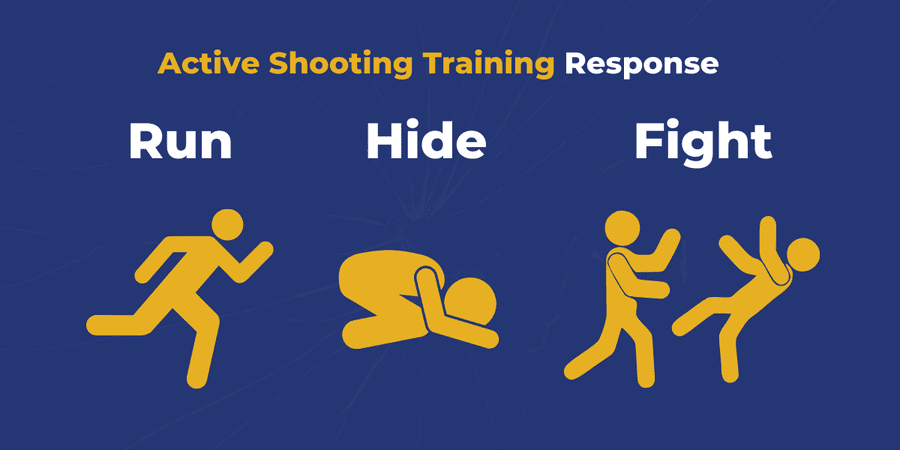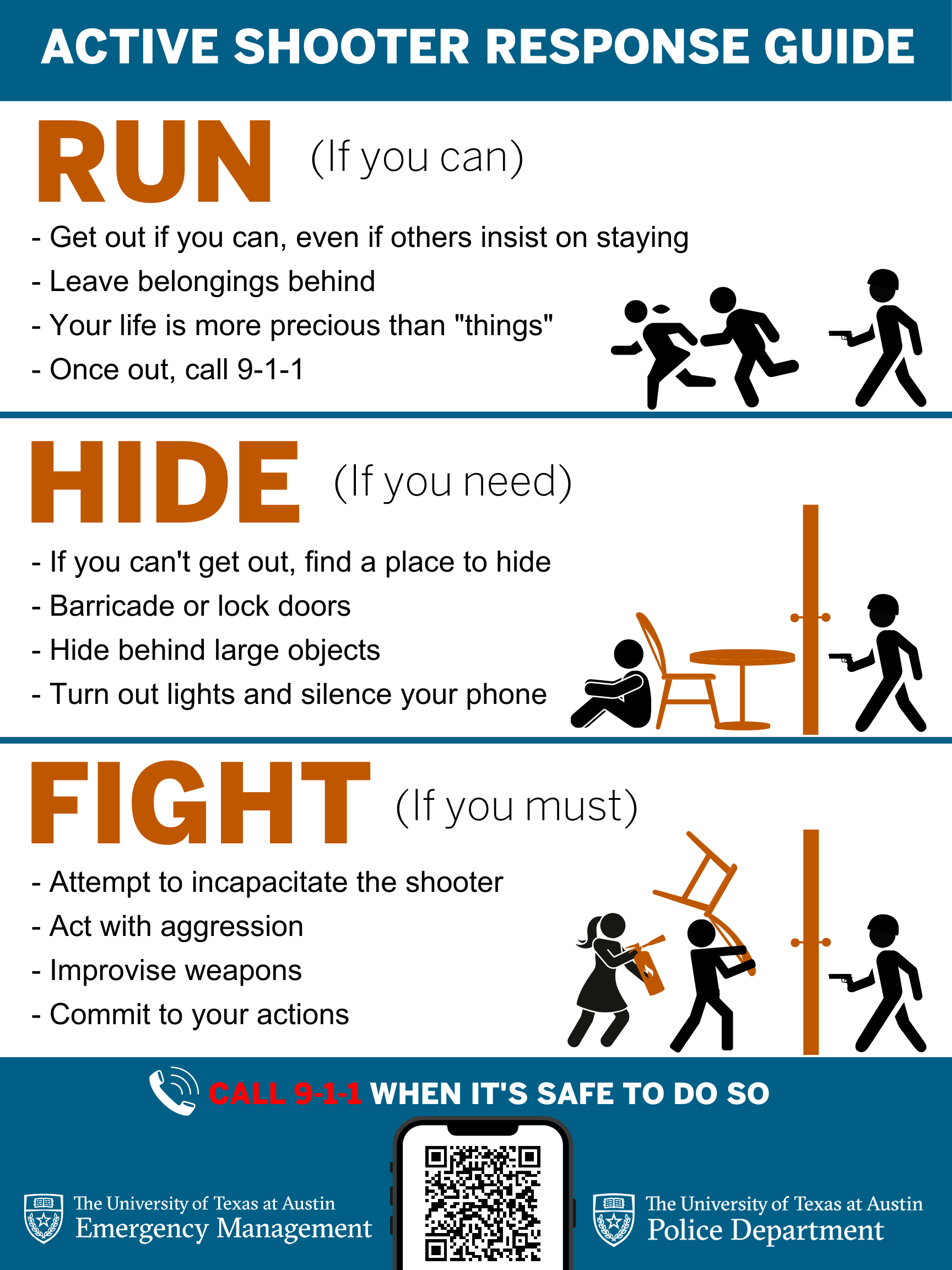Just How Active Shooter Training Can Conserve Lives in Dilemma Situations
Just How Active Shooter Training Can Conserve Lives in Dilemma Situations
Blog Article
Exploring the Key Components and Objectives of Efficient Active Shooter Training Programs
Active shooter training programs are crucial in outfitting individuals and companies with the needed skills to react effectively to possible hazards. These programs incorporate vital components, such as the "Run, Hide, Battle" strategy, sensible scenario simulations, and communication protocols, promoting an environment of preparedness. In addition, they emphasize psychological durability to help individuals browse high-stress situations. As we explore the intricacies of these training programs, it ends up being apparent that understanding their detailed nature is essential to enhancing security procedures and action capacities. What specific aspects genuinely specify their performance?
Importance of Active Shooter Training
Energetic shooter training programs are vital for boosting readiness and response in the face of prospective threats. These programs aim to gear up people, organizations, and communities with the expertise and abilities essential to efficiently respond to energetic shooter scenarios. The raising frequency and extent of such occurrences underscore the relevance of aggressive measures, as prompt and informed feedbacks can dramatically alleviate harm.
In addition, active shooter training cultivates a society of security and understanding within institutions, whether they be institutions, work environments, or public venues. Participants learn to identify early caution indications and recognize the relevance of interaction and team effort throughout emergency situations. This training not only highlights individual security yet additionally promotes a collective responsibility to safeguard others.
In addition, these programs can assist alleviate the stress and anxiety and concern that commonly go along with discussions concerning prospective threats. By offering organized advice and useful approaches, people gain confidence in their ability to respond properly. Ultimately, the relevance of active shooter training hinges on its prospective to conserve lives, lower injuries, and grow a ready and durable area qualified of facing unanticipated challenges.
Key Elements of Training Programs
Effective active shooter training programs usually integrate numerous essential parts made to prepare participants for real-world situations. The very first component is thorough education on the nature of energetic shooter incidents, consisting of statistics, study, and emotional aspects that influence assailants. This academic foundation is essential for cultivating understanding and understanding amongst participants.
Following, programs commonly include training on personal precaution, highlighting the "Run, Hide, Fight" method. Participants learn how to assess their atmosphere, make fast decisions, and take ideal actions throughout a dilemma. Additionally, the inclusion of effective interaction skills is vital, as participants have to recognize exactly how to report cases and share vital information with police.
An additional crucial element is the participation of law enforcement or security specialists, who offer understandings into tactical reactions and the importance of teamwork throughout a situation. Programs must deal with the mental results of an active shooter scenario, using strategies for coping and recuperation.
Last but not least, ongoing training and refresher courses are vital to make sure that understanding stays present and participants feel great in their abilities. Together, these crucial elements create a well-shaped training program that furnishes individuals to react successfully to an energetic shooter event.
Realistic Circumstance Simulations
Practical situation simulations are an essential element of energetic shooter training programs, supplying individuals with the chance to engage in hands-on practice that mirrors possible real-life scenarios. These simulations improve the training experience by creating an immersive atmosphere where people can use academic understanding in useful settings.
Via using role-playing, mock circumstances, and specialized training centers, individuals experience the immediate challenges and stressors associated with an active shooter case. This method of training advertises quick decision-making, teamwork, and the application of security procedures under stress. It allows -responders to develop vital skills such as situational understanding, threat assessment, and reliable discharge treatments.
Moreover, realistic simulations help to determine potential weaknesses in individuals' feedbacks, enabling trainers to supply targeted comments and enhance overall readiness. The incorporation of differing scenarios, including different locations and enemy accounts, further enhances the training experience, making certain that participants are well-appointed here to handle a variety of potential situations.
Eventually, these simulations serve not just to advise yet likewise to develop self-confidence amongst participants, fostering a sense of preparedness that is essential for reliable emergency reaction when faced with an active shooter risk.
Communication Methods in Training
Clear interaction is essential in active shooter training programs, as it directly influences the efficiency of feedback efforts throughout a situation. active shooter training. Training individuals have to recognize the procedures and treatments that will certainly lead their activities if faced with an active shooter circumstance. Establishing clear lines of communication ensures that all individuals included can communicate info promptly and precisely

Moreover, training programs must stress the value of energetic listening. Ultimately, reliable communication approaches are important for preparing people to react Homepage emphatically and cohesively in the face of an active shooter event.

Psychological Readiness Strategies
Psychological readiness methods are increasingly identified as necessary elements of active shooter training programs - active shooter training. These strategies intend to equip people with the mental resilience needed to react efficiently in high-stress scenarios. By fostering a way of thinking in harmony with possible dangers, participants can better take care of fear, anxiety, and confusion during crucial cases
Secret mental preparedness techniques consist of scenario-based training and stress shot workouts. Scenario-based training immerses participants in realistic simulations that resemble the turmoil of an energetic shooter occasion, enabling them to practice decision-making under stress. This direct exposure aids build experience with emergency procedures, enhancing second-nature reactions.
Stress and anxiety shot entails progressive direct exposure to stress-inducing scenarios, check this site out allowing people to develop coping systems. This can include breathing exercises, visualization strategies, and cognitive restructuring to reframe adverse ideas. By incorporating these techniques, training programs can cultivate a sense of self-confidence and control, which is essential in crisis scenarios.
Furthermore, post-incident psychological support is important to attend to the psychological after-effects of an active shooter event. Integrating psychological health resources right into training programs not just prepares people for immediate feedbacks but also promotes lasting psychological health, inevitably adding to a much safer and extra durable setting.
Verdict
Finally, effective energetic shooter training programs are essential for improving readiness and action capacities in the face of prospective risks. By including crucial parts such as realistic situation simulations, interaction approaches, and emotional readiness methods, these programs outfit individuals and organizations with the necessary skills to browse high-stress situations. Ultimately, a detailed technique to training cultivates strength and promotes a society of security, consequently adding to the general safety and security of neighborhoods in the event of an active shooter occurrence.
Report this page